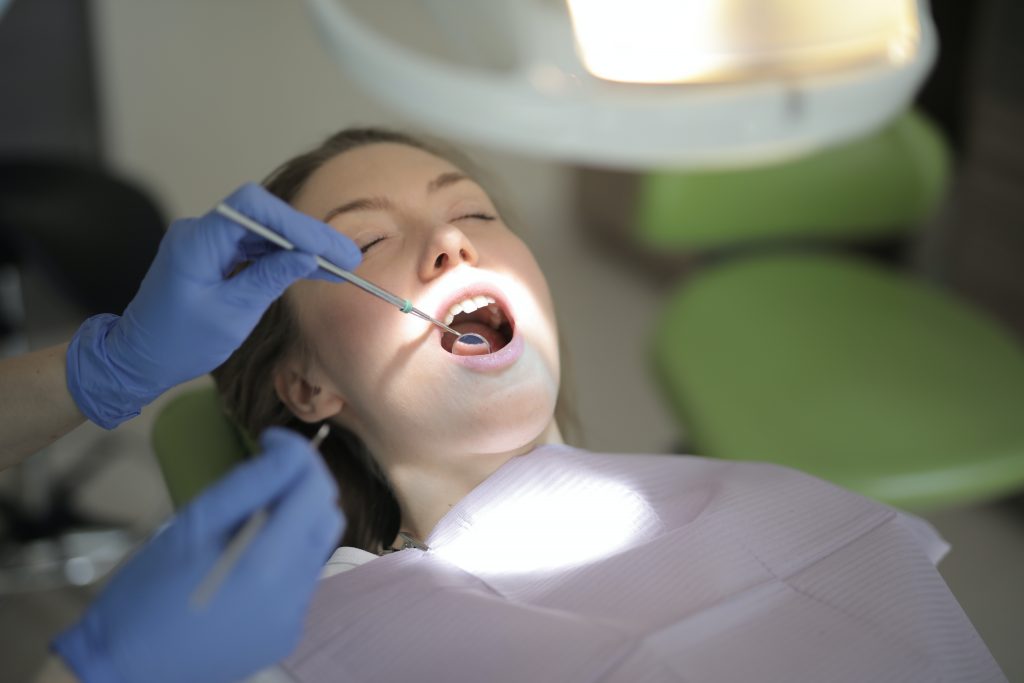Common Dental Problems

Each person is unique, including their teeth and jaws. While one person may experience crowding another might have spacing issues. That’s why we treat each person case by case. Braces and Invisalign can resolve these issues so you can achieve your dream smile as quickly as possible.
Crossbite
What?
A crossbite means that teeth are misaligned. Top teeth will sit inside the lower teeth when your mouth is closed. There are two types of crossbites- posterior and anterior. A posterior crossbite sees your back top teeth sitting inside the bottom teeth. An anterior crossbite sees a few top teeth sitting behind bottom teeth, however, this is not an underbite.
Consequences:
You could experience a change in how your jaw sits, which can cause lopsided jaw growth. A crossbite can wear down the enamel on your teeth, weakening them and increasing the likelihood of chipping your teeth.
Underbite
What?
An underbite occurs when your lower teeth overlap your top teeth.
Consequences:
Similar to a crossbite, underbites wear down the enamel of your teeth. This issue can also cause stress on your jaw and may contribute to sleep apnea.
Open Bite
What?
An open bite can be caused by thumb sucking and forces the teeth to misalign. An anterior open bite is when your back teeth are together but your front teeth aren’t, whereas a posterior open bite is when your front teeth meet whilst your back teeth do not.
Consequences:
An open bite can create issues with swallowing as the tongue pushes through the teeth. It can also cause speech issues and difficulty with chewing or biting food.
Deep Bite
What?
A deep bite is when your top teeth cover the bottom teeth too much.
Consequences:
A deep bite can cause the upper teeth to dig into your lower gums or vice versa. This can create gum issues, such as gum disease and ulcers, making eating a painful process. This issue will also wear down your tooth enamel, weakening the teeth.
Crowding
What?
Crowding of the teeth is a common problem and occurs when there isn’t enough space in the jaw or when there are large teeth. This may then lead to teeth overlapping, rotating or becoming crooked.
Consequences:
When crowding occurs, it makes cleaning your teeth hard to clean. When teeth aren’t cleaned properly cavities and gum disease are more likely to occur. Aesthetically, crowded teeth don’t look nearly as good as straight teeth.
Spacing
What?
Spacing is the opposite of crowding and occurs when there is too much room in the mouth or if teeth are underdeveloped and small. Missing teeth can also create spacing.
Consequences:
When your teeth are spaced out, you are more likely to get food stuck in the open areas. Gum disease and cavities can also be a consequence.
Protrusion
What?
When your jaw is too far forwards or backwards, it creates protrusion of the teeth. Sometimes when your teeth have grown in at an angle, they can also cause the front teeth to then stick out.
Consequences:
When you have protruding teeth, they can be prone to being damaged. Having teeth that stick out can mean that you aren’t able to comfortably close your mouth and lips. This can dry out your oral tissue, which can lead to gum disease. Speech problems can also be a result of teeth protrusion.
If you notice your child developing any of these problems, we recommend coming in for a consultation. It’s always better to work on the issue as the child’s mouth is developing. However, this doesn’t mean that the problems are unfixable once a mouth has fully developed. We can also successfully treat adults with these problems.